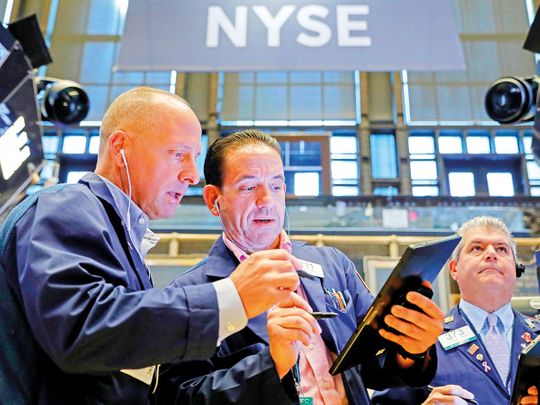
Dubai: Global equities may witness a continued sell-off this week weighed by a double whammy from US President Donald Trump and the Federal Reserve — just at a time when the going was good by far.
Trump levied a fresh round of taxes on imports worth $300 billion of Chinese goods, reviving measures seen to escalate already brewing tensions between the US and China. The Federal Reserve hinted that they are not starting with a rate cutting cycle, surprising traders who were expecting a dovish tone.
This caused sell-off in equities, with traders seeking to take refuge in bonds and gold.
The S&P 500 index extended its losing streak for another session on Friday, losing a total of 3 per cent from its all-time high of 3,027.98 hit earlier last week. The S&P 500 index has gained nearly 17 per cent so far in the year. The Dow Jones Industrial Average (DJIA) also shed 2.7 per cent last week after having gained 13 per cent since January 1.
“Broader risk sentiment is wobbly amid yet another central bank regime shift where they have gone from supporting risk assets to now being forced to do so.
Indeed, owning equities in a trade war laced environment is proving to be a risky business yet again,” Stephen Innes, Managing Partner at VM Markets Pte Ltd Singapore said.
On Friday, the S&P 500 index shed 0.73 per cent to end at 2,932.05, while the Nasdaq Composite Index closed 1.32 per cent lower to be at 8,004.07.
China and the US have been in the middle of the trade war, but Thursday’s tariffs caught analysts with surprise after a period of lull in measures and counter measures from both the countries. The International Monetary Fund has said that trade war would compound global woes and lowered their growth forecasts due to the trade war, that is impacting investments and business confidence.
“Tariff-related risk-off events tend to take on a life of their own and can linger for many weeks so fading the move too early could prove to be a costly exercise in frustration and hence the reason the markets are not backing the truck up on equity markets just yet,” Innes said.
Phaneendar Bhavaraju, Managing Partner & Chief Investment Officer at Arrow Capital DIFC sees a downside cap in the S&P 500 index.
“Trumps tweet has over powered the FED and the decent data released on Friday. We don’t anticipate S&P to slide below 2870 levels. Dollar could also find its bottom next week and start inching up,” Bhavraju added.
The dollar weakened on Friday amid expectations of another cut by the Fed in September. The dollar index fell 0.30 per cent to end at 98.074.
As a result of a weaker dollar, gold prices rose to its two-week high of $1,446.10 on Friday after gaining 2 per cent last week.
“Investors continue to hedge and diversify into Gold supporting the uptrend as the yellow metal’s appeal as an alternative asset gains widespread appeal. Falling real interest rates make Gold an inexpensive hedge amid global economic uncertainty,” Innes said.












